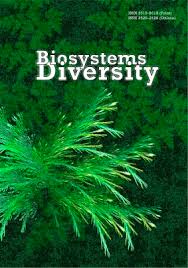Characteristics of the response of the microalga (Dunaliella viridis) to cerium compounds in culture
Characteristics of the response of the microalga (Dunaliella viridis) to cerium compounds in culture
Author(s): E.M. Klimova, A.I. Bozhkov, E.A. Bychenko, E.V. Lavinskaya, N.M. Zholobak, A.M. KorobovSubject(s): Evaluation research
Published by: Дніпропетровський національний університет імені Олеся Гончара
Keywords: bioindicator; cytotoxicity; cerium salts; cerium dioxide nanoparticles;
Summary/Abstract: Recently, nanobiotechnology has been developing intensively; therefore, various properties of nanoparticles, which depend on their origin, concentration, and size, are of interest. It is known that CeO2 nanoparticles cause a positive biological effect. These particles are able to penetrate through biomembranes. At the same time, there are assumptions about a high degree of biological risks when using nanomaterials, and it is obvious that the biosafety of nanomaterials is decisive in the development of new products, including for medicine. The cytotoxicity of samples of cerium salts and cerium dioxide nanoparticles of different sizes was assessed at different concentrations using D. viridis. The cytotoxicity level by morphological and functional disorders of D. viridis was investigated, as determined by the change in cell shape, accumulation of inclusions, loss of flagellum, change in nature and movement, the formation of micro- and macroaggregates by D. viridis cells and exometabolite release. The cytotoxicity coefficient was calculated as a quotient of total detected changes divided by their number. It was shown that cerium salts (cerium (IV) ammonium nitrate and cerium (III) chloride) had pronounced cytotoxicity, which exceeded cytotoxicity values of the control by 7 and 6 times, respectively.
Journal: Biosystems Diversity
- Issue Year: 27/2019
- Issue No: 2
- Page Range: 142-147
- Page Count: 6
- Language: English

